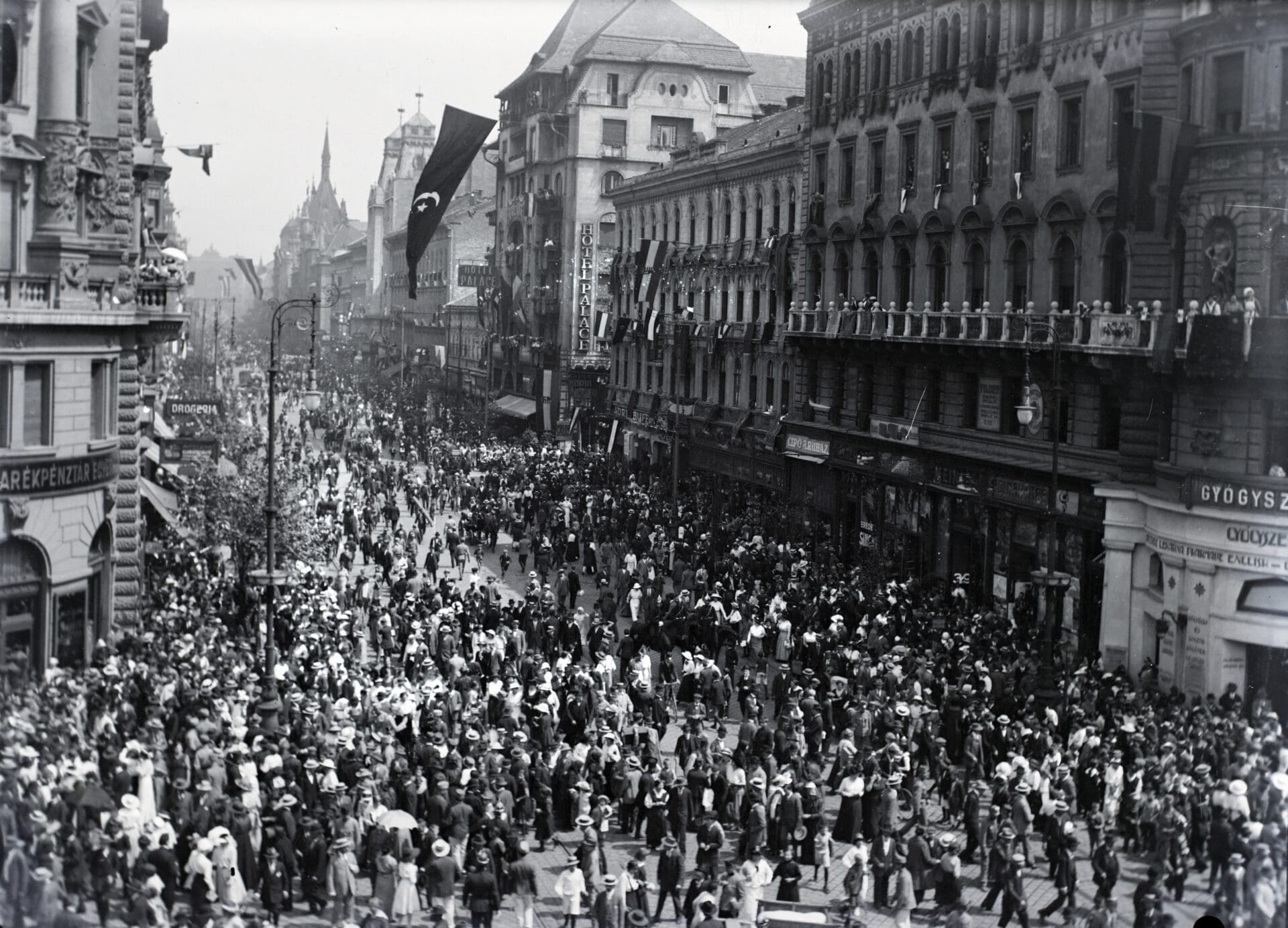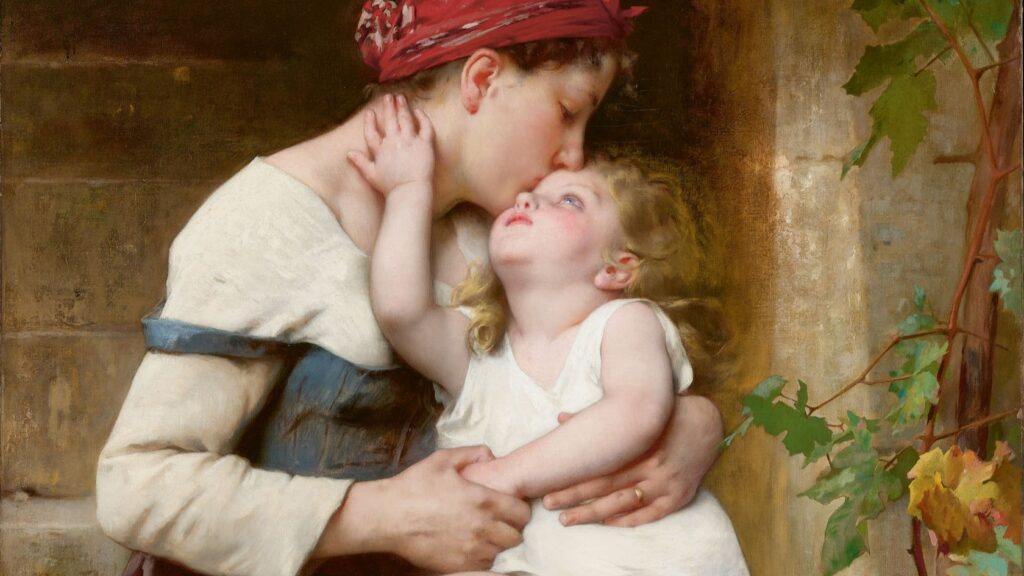The early twenties in Hungary brought about not only a fervent nationalist discussion about Trianon, the Romani or antisemitism, but also illusory concepts regarding the Eastern roots of the Hungarian people. Of course, these discourses were not exclusively those of the political right. Left-wing Jewish philanthrope Lajos Hatvany was convinced that the character of Hungarians was Asian,[1] and the similarly progressive Catholic priest, János Hock also wrote that Hungarians ‘remained Asian in the middle of Europe’. ‘We are fire and water’, ‘strangers’ – he attested.[2]
In one place, the British ambassador Thomas Beaumont Hohler compared the anti-capitalistic ‘Asian traditions’ of Hungarians to those of the Japanese and Turks, and somewhere else he explained at length that nothing bothers a Hungarian more than being addressed as German-Austrian or Eastern. ‘Neither is a correct description,’ he wrote. The Hungarian is more of a link between Western Europe and the East – Hohler believed. The nation combined the good and bad qualities of both. ‘He is the creativity and poetry of the East, as well as its laziness; however, he possesses the desire to embrace the culture of the West. . . and to be recognized as European’.[3] But the Eastern character was taken up by the nationalist discourse of the time with considerable joy, performing a kind of enthusiastic vivisection on the Hungarian people, and trying to stick the label onto anyone who offered something slightly different from the West. All this was not much different from the servile enthusiasm of those seeking the friendship of Western peoples, but while the former was at least built into some kind of organic system of previous coexistence, the results of the latter operation were Frankensteinian.
Other nationalists spoke of our ‘Bulgarian relatives’, our siblings, ‘the Japanese’, and our other ‘six hundred million relatives’.
The Calvinist far-right sociologist, István Milotay, noted in his book that the people of the Kunság region of Hungary were, in his opinion, ‘practically Afghans, both in terms of the shape of their eyes and their oriental facial expression’, who, ‘if we imagine the turban on their head, would look like some kind of Amanullah’.[4]Other nationalists spoke of our ‘Bulgarian relatives’, our siblings, ‘the Japanese’, and our other ‘six hundred million relatives’.[5] A Christian Socialist newspaper in Székesfehérvár encouraged its readers to become like ‘Attila, the scourge of God’, ‘cutting across the western Mammon-cult’. ‘Hungarian’, ‘you must become the East incarnate!’, the article exhorted its readers.[6]
In reality, throughout their history, the Hungarian people had to suffer under the yoke of Eastern occupations, for example, during their historical encounters with the Turks, so some started to rewrite history to conceal this inconvenient fact. Gyula Gömbös, later prime minister of Hungary, explained in one place that the Ottoman Empire and the Hungarian people fought a ‘tragic fraternal war’,[7] and Catholic bishop István Zadravecz, during the inauguration of the Capistran statue in the Buda castle, about how Christianity was once at war with Muhammad and the Koran, but is now at war with Bolshevism and the Jewish Talmud.[8] Of course, there was also a certain sense of superiority in identifying Hungarians as a Turanian nations: Gyula Pekár believed that ‘we Hungarians are the natural leaders of the Turanian races at the westernmost tip of the Turanian people’s continent’.[9] And Catholic bishop Ottokár Prohászka directly proposed a few years later that the Hungarians would have to convert Asia, especially China and Tibet.[10] The Jesuit newspaper Szív (Heart) had an ironic comment on such ideas: ‘We have already experienced the Tatar and Turkish “brotherhood’’. Would the Chinese perhaps put on spectacles and examine the fraternal features on our faces, before they impale us?’[11]
The lines of Prohászka point to the contradictions of the confusing ideology: Hungarians were a Western people with an ancient past in the East, not an Eastern people with a recent Western past. Although Zoltán Felvinczi Takács, an art historian and university professor, and a member of the Turáni Társaság – a society dedicated to nurturing the Eastern traditions of Hungarians –, wrote in the Turán magazine in 1921 that Hungarian relations with Western peoples should be moderated ‘to only meeting the practical needs of life’, but in the field of literature, art and morality ‘it is good if break up with them as soon as possible’,[12] this was difficult to realize. According to the proposal of one Jenő Pintér, the first step in building the Eastern consciousness of the Hungarian youth was to familiarize them with Northern European Estonian and Finnish literature.[13] In addition, the homage to the East not only denied Hungarians their western roots, but also their Christian roots: its followers did not want to take Prohászka’s Catholicism to Tibet, but they wanted to bring Tibet to the Catholic Church.
Provided, of course, they wanted a Catholic church at all. Zadravecz angrily noted in his diary that in certain far-right secret circles close to the government – the Etelközi Szövetség – they were working on the creation of a ‘Hungarian religion’, with a large church on the side of Gellért Hill, with a cave where they could sacrifice horses and follow ancient Hungarian commandments.[14] In the fall of 1921, Zadravecz was asked to be the head of the religion; the bishop rejected them, calling them followers of a ‘four-legged religion’. Although Zadravecz in his diary mainly claimed that the cherishing of the ancient Hungarian religion was practiced – like all other despicable things – by Protestants, it was Gyula Muraközy, a Calvinist pastor from Kecskemét, who aptly described the psychological background of this ‘Hungarian romantic paganism’. He believed that some saw the Christian faith as a Western import, a foreign garment, which obscured and deformed the ancient Hungarian character. ‘After all, in this way, the real Turanian Hungarian should throw away all the achievements of Western culture!’, he remarked.[15]
Ultimately, all of this could be taken to the extreme and become outright comical. As early as 1921, the extravagant author, Béla Balás Szépvizi jotted down what is today the favourite idea of self-anointed, fake historians and preachers: ‘Jesus was also Hungarian. Moreover, he was a Székely (a certain group of Hungarians living mostly in Transylvania – ed.)’.[16] In the mid-twenties, he detailed the tenets of the Old Hungarian religion as follows: an altar stone must be set up in the middle of a birch forest, on which a white horse must be sacrificed in flames. The Hungarian priest should have a golden robe on his shoulders, a wheat wreath on his head, and the sword of God on his side. Meanwhile, witches – ‘beautiful Hungarian magician girls’ – should pray to ‘Our Lady, the Moon’, preferably to the popular tune of Psalm 42 included in Protestant hymnals.[17] He also replaced Jesus with the ancient Assyrian Sun God, since he was, at least, not Jewish. Zadravecz was opposed to the pagan renaissance for a good reason. One of Szépvizi’s points was that in the ancient Hungarian religion, men abduct their chosen women, that it was forbidden to marry ‘Germans and Semites’, that the Catholic Church was a congregation of ‘bloodthirsty beasts’, and that there was no such thing as ‘absolution from sins’.[18]
She explicitly linked the ‘resurrection’ not to Jesus, but to the recovery of the lost Hungarian areas
Others diligently produced substitutes for the Apostles’ Creed and the Lord’s Prayer, which were sometimes covertly, sometimes openly heretical texts. In 1921, Mrs Elemér Papp-Váry (born Szeréna Sziklay) wrote a poem for the competition of a nationalist organisation which immortalized the ‘desire for revenge’. In this, she explicitly linked the ‘resurrection’ not to Jesus, but to the recovery of the lost Hungarian areas.[19] In the 1921 creed of Gyula Altenburger, who fancied himself a kind of race-protecting messiah, it was already stated that ‘the ancestral Aryan is not saved by his good deeds, but by the nobility of his blood, and he is damned by the contamination of his blood.’ ‘Woe to the crippled and coloured children: together with their mothers, they shall be exposed to the wild animals!’[20]
In the 9th district school of Budapest, ‘repentant’ students – that is, young people who had previously received left-wing education – had to do penance in the summer of 1921 with the following prayer: ‘Our Father, God of Hungarians! . . . May your will, always wanting our good, be done. . . forgive our sins committed against other Hungarians, as we also forgive our enemies in the world war’.[21] And so on. The criticism of these views was not limited to the political left. The author Dezső Szabó, himself a passionate nationalist and – at this point – an antisemite, ridiculed the adherents of the above-mentioned views as ‘Samoyed-Japanese-Kyrgyz idiots’.[22] Szabó’s tone was, as usual, critical, cynical and sharp. Not all adherents to the idea of seeking a new alliance in the East were ‘idiots’, and not all of them were nationalists. Our knowledge of Eastern ancestry is deeply ingrained in our national tradition. Yet certain offshoots of this ideology, infused with the then-modern racialist tones of the period, certainly deserved criticism, and Szabó’s lines prove that even people on the right felt the need to step up to this phenomenon in the early twenties.
[1] Jövő, 5 Jan. 1922. About the topic in general, see: Ablonczy Balázs, Keletre magyar! A magyar turanizmus története, Budapest, Jaffa, 2016.
[2] Bécsi Magyar Újság, 21 Jan. 1922.
[3] National Archives (Kew), FO 371/7633 and 371/3636.
[4] Milotay István, Az ismeretlen Magyarország, Budapest, Genius, 1930, p. 36.
[5] Kádár Gábor, Vági Zoltán, A végső döntés. Berlin, Budapest, Birkenau 1944’, Budapest, Jaffa, 2013, p. 102. and Godó Ágnes, Sztana Béla, A Horthy-rendszer katonai ideológiája, Budapest, Zrínyi, 1965, p. 43.
[6] Testvér (Székesfehérvár), 22 Jan. 1920.
[7] Ungvári Tamás, Csalódások kora. A „zsidókérdés” magyarországi története, Budapest, Scolar, 2010, p. 241.
[8] Zsidó Szemle, 12 Aug. 1921.
[9] Turán, 1921, p. 1.
[10] Nép, 5 Oct. 1924.
[11] A Szív, 10 July 1920.
[12] Turán, p. 8.
[13] Turán, p. 42.
[14] Borsányi György (ed), Páter Zadravecz titkos naplója, Budapest, Kossuth, 1967, p. 145.
[15] Kálvinista Szemle, 10 Dec. 1921.
[16] Szépvizi Balás Béla, Kánaán pusztulása. Ókori regény, Budapest, Nemzeti irodalmi és nyomdai részvénytársaság, 1921, p. 218.
[17] Szépvizi Balás Béla, A magyar nemzeti vallás. Káté, Gödöllő, Napsugár Turáni Irodalmi Vállalat, 1925, p. 4, pp. 21–22, p. 72, pp. 27–28.
[18] Szépvizi Balázs Béla, ‘Az Ősmagyar Vallás és az öt nagy vallás. Alapigazságainak, keletkezésének, törvényeinek, szervezetének, történetének, történeti jóslatainak rövid vázlata és imádságok’, Turáni füzetek, 1925/2, pp. 77–79, p. 57, p. 40.
[19] Vonyó József, ‘A Magyar Hiszekegy születése’, História, 2002/01, pp. 18–19.
[20] Szabó Miklós, Az újkonzervativizmus és a jobboldali radikalizmus története (1867-1918), Budapest, Új Mandátum, 2003, p. 300, footnote number 539.
[21] Ferch Magda, ‘Ellenforradalmi szankciók a budapesti iskolákban 1919 augusztusa után’, Pedagógiai Szemle, 1976/5, p. 405.
[22] Élet és Irodalom, 20 March 1923.







